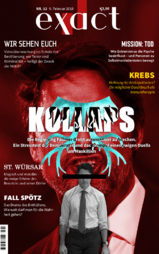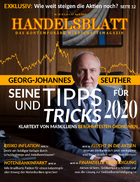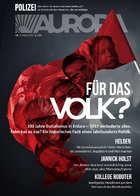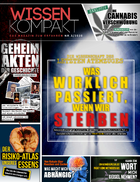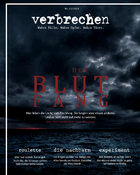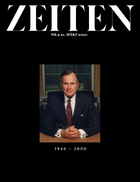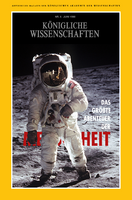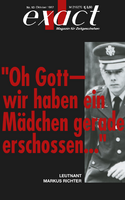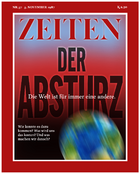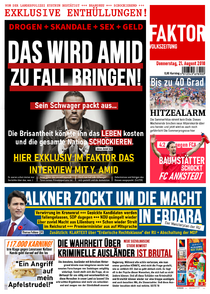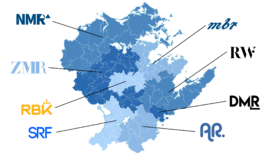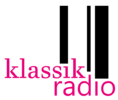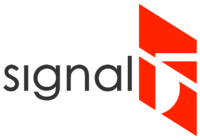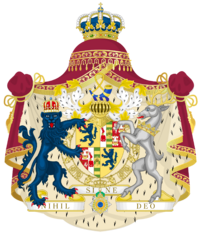Media of Mascylla
The media of Mascylla are a broad mass consumed array of products and formats: in the type of online, print, and broadcast media, such as radio, television, newspapers, magazines, and websites. It also developed a strong and varied music industry.
Mascylla at large has a wide field of providers, both state-owned, financed by national tax revenues, and for-profit organizations and companies which rely and depend on advertising, subscription, and other generated revenues. Freedom of speech is protected by the constitution, while journalists enjoy an extensive governmental catalogue of protection and encouragement. This leads to a variety of different formats and outlets and a large consumption of media by Mascylla's populous. It is also internationally recognized and globally influential, with various media translated into other languages and their appearance known worldwide.
Magazines
A large range of magazines are sold in Mascylla covering most interests and potential topics for current affairs, politics, economics, sciences, and contemporary culture. Certain magazines and journals have achieved worldwide circulation and have been translated into multiple languages, most notably Erkunder, Natur, Handelsblatt, Exact and Zeiten.
Magazines as a media has achieved significant importance and remains a key competitor to the traditional newspapers. While most major magazines are distributed through limited companies in favor of specializing in the release of one certain media instead of a diversifying, a growing number of monthly and weekly magazines are attributed to the Müller Media Group, which is in turn a subsidiary of Henschke+Bertelsmann, an internationally significant literature distributor and media conglomerate. The Sohlbrecht AG poses a counterpart to Müller, whose published magazines, including Exact and Zeiten, retain large creative autonomy in exchange for their affiliation to the publisher. The remainder of magazines are not completely independent however, with usually a portion of their stocks being owned by other corporations; for example ENS owns 30% of Aurora, while Sohlbrecht retains 45% of wissenkompakt despite it being published by Müller.
| Magazine | Abbreviation | Circulation (December, 2019) |
Political alignment | Frequency | Publisher/Parent company |
|---|---|---|---|---|---|
| Exact | EX | 564,393 | left-liberal / centre-left | weekly (every Saturday) | — |
| Zeiten | ZT | 4397,026 | centre / centre-left | monthly | — |
| Erkunder | ERK | 443,933 | left-liberal / centre-left | monthly | Academy of Royal Sciences[1] |
| Die Schau | DS | 375,278 | liberal-conservative | weekly (every Monday) | — |
| Natur | NA | 320,835 | left-liberal / centre-left | monthly | — |
| Handelsblatt | HB | 231,229 | economically liberal | weekly (every Tuesday) | — |
| Aurora | AUR | 216,670 | left-liberal / liberal-conservative | weekly (every Monday) | — |
| wissenkompakt | wk | 212,981 | liberal-conservative | monthly | Müller Media Group |
| verbrechen | vbr | 157,563 | — | monthly | Müller Media Group |
Gallery of example covers
Gallery of historical covers
21 March 2000 Zeiten cover commemorating the assassination of Michael Meilke
June 1980 Erkunder magazine detailing the Sigma 5 moon landing
July 1991 Zeiten special edition about the preceding July 20 1991 attacks
Newspapers
The Mascyllary print media market, though diversified, is recognized as one of the most concentrated media markets in the world. The most popular daily paper is the Faktor and its various subsidiaries and specialized papers, easily surpassing one million copies sold nationally every day. Other major daily published newspapers are the Langquaider Zeitung, Westmaskillisches Blatt and Globale Allgemeine Zeitung, thoug regarded more highly for their content quality and appropiate journalism, which the Faktor was repeatedly criticized of lacking. Unusually, almost all Mascyllary print media publishers jointly operate the Maskillischer Presserat voluntarily as a body for their own self control. The council is a government-approved body for complaint and report, which through its senate can decide whether or not an article or media applies to the ethical standards of the national honorary press codex (Maskillischer Presseehrenkodex) and if it sees a file of report fit.
Major newspapers (national)
| Newspaper | Abbreviation | Circulation (December, 2019) |
Political alignment | Frequency | Publisher/Parent company |
|---|---|---|---|---|---|
| Langquaider Zeitung | LQZ | 231,507 | left-liberal / centre-left | Monday - Saturday | Gottfried Heinker Publishing Group |
| Westmaskillisches Blatt | AB | 194,263 | centre-right / "conservative liberalism" | Monday - Saturday | Monika Schölf Publishings |
| Globale Allgemeine Zeitung | GL | 185,686 | centre-left | Monday - Friday | Globus Media Group |
| Der Bote | dbt | 151,873 | left-liberal | Monday - Saturday | MAIXextra-Stiftung |
| Rehner Spiegel | RS | 85,158 | centre-right / conservative to liberal | Monday - Saturday | Monika Schölf Publishings |
Regional or local newspapers
Regional and local newspapers of cities, regions, towns, municipalities, and other also achieve note-worthy circulation numbers and are historically popular. These are a few popular ones (the list is not exhaustive): Augusthaler Kurier (110,107 copies; December 2019), Jusländer Volkskurier (96,772), Königsreher Allgemeine (127,284), Flussmunder Schau (107,610), Königlicher Bote (85,000), Mögdpresse (30,498), Nordbote (136,201), Öhrenlandpost (83,505), Pereuther Zeitung (87,463), Weidenauer Zeitung (25,948), and Wilhelmshagener Anzeiger (75,675).
Newspapers of non-Hesurian-language
Due to Mascylla's diverse makeup of minority languages, numerous editorials or small townships publish their own non-Hesurian-language newspapers. Among the most widely circulated newspapers are: The Tharau Boder (published in Cuthish in Tharau), The Daybook (published in Cuthish in Warthburg), Sigairen Airut (published in Valimian in Sigairen), Ankerstolpe (published in X in Isel-Jansdorf), Günlük Haberler (published in X in Estmar-Rathfeld), Yeni Dergi (published in X in Kützdorf), and Feliske źinsa (published in Falian in Sorbus).
Tabloid newspapers (Boulevard style)
Tabloid newspapers are a style of newspapers, characterised by big headlines, bright colours, attention-grabbers, sensational stories and controversial topics. In Mascylla, they are referred to as Schreizeitungen (literally "screaming newspapers" for their evasive design) or Palettenpresse ("palette press" for its colourful imagery and wide mix of topics), rarely also Boulevardzeitungen (roughly translated as "popular papers").
- Faktor (1,102,374 copies), with several sister newspapers suited for certain regions or cities (such as WeidenFaktor or AugusFaktor) and a Sunday newspaper (SonntagsFaktor; 725,483 copies). Its page format is unusually large for a tabloid newspaper, but is not counted as a broadsheet newspaper for its contents and design.
- Express (483,021)
- Aktuelle (426,352), with its sister newspapers Aktuelle am Sonntag (198,271) and Aktueller Sport (93,488)
- Schau (232,896), with its sister newspaper Monatsschau (165,750)
- Welt am Morgen (173,928)
- Skandal (82,346)
- Kontrovers (75,028)
- Sterne (56,552)
- Königsreher Post (21,479)
Radio
Radio in Mascylla is largely dominated by the public broadcasters of the state, which operate radio stations throughout the country. The domestic services of these broadcasters and all their revenue are funded by their television and broadcasting license. Rather than operating as independent entities, many radio studios are owned by large radio groups which broadcast a similar format to multiple regions. These are either the state-owned NMR, MBR, RKN or RBK, ZMR, RW, SRF, DMR and AR, and the privately owned Maskradio, Urbaner Rundfunk, various FM and Radio formats, and StudioNation.
Mascylla has eight regional public radio broadcasters in service, though all are also thoroughly active in broadcasting their own television channels as well. They cooperate in production value, general themes or topics, branding and advertisement and cultural event planning. These broadcasters are:
Nordmaskillischer Rundfunk – North Mascyllary Broadcasting – incorporating the states of Aldia, Halstein, Jusland, and Pereuth, Maschkenbuchter Rundfunk – Mask Bight Broadcasting – in Flussmund, Kreshia, Langquaid, Laurenz, and Nelgery, Rundfunk Königsnah (or Rundfunk beim König) – Broadcasting near the King – in the Kronlande and Eustria, Zentralmaskillischer Rundfunk – Central Mascyllary Broadcasting – in Elspland, Falia, Folnery, and Shwesia, Rundfunk an der Warne – Broadcasting at the Worne – in Terunder-Welsbach and Tudonia, Südlicher Rundfunk – Southern Broadcasting – in Gotia, Holnia, and Sigismund, Delchsmaskillischer Rundfunk – Delcian Mascyllary Broadcasting – in Ihlarn, and Adwhischer Rundfunk – Adwhinish Broadcasting – in Adwhin
Gallery of popular private broadcaster logos
Television
Most-viewed channels
The channels with the largest shares of national television viewing in 2010 and 2018 in comparison were:
| Number | Channel | Owner/Parent company | Share of total viewing (%) in 2010 |
Share of total viewing (%) in 2018 |
Comparison 2010-2018 |
|---|---|---|---|---|---|
| 1 | ENS | ENS | 14.1 | 14.8 | |
| 2 | Kanal+ | Kanal+ Media Group | 12.3 | 11.2 | |
| 3 | Telemax | Telemax Group | 12.4 | 7.9 | |
| 4 | ARF | NationalPF | 6.8 | 7.2 | |
| 5 | Signal 5 | Signal Media | 6.9 | 6.6 | |
| 6 | Orbit.1 | Kanal+ Media Group | 4.3 | 4.1 | |
| 7 | RTele | Telemax Group | 1.2 | 3.3 |
Channels by order
- ↑ The Academy of Royal Sciences Lehpold (Akademie der königlichen Wissenschaften Lehpold) is a government-funded agency and society tasked with scientific exploration and research formally under the Monarch since 1869.

